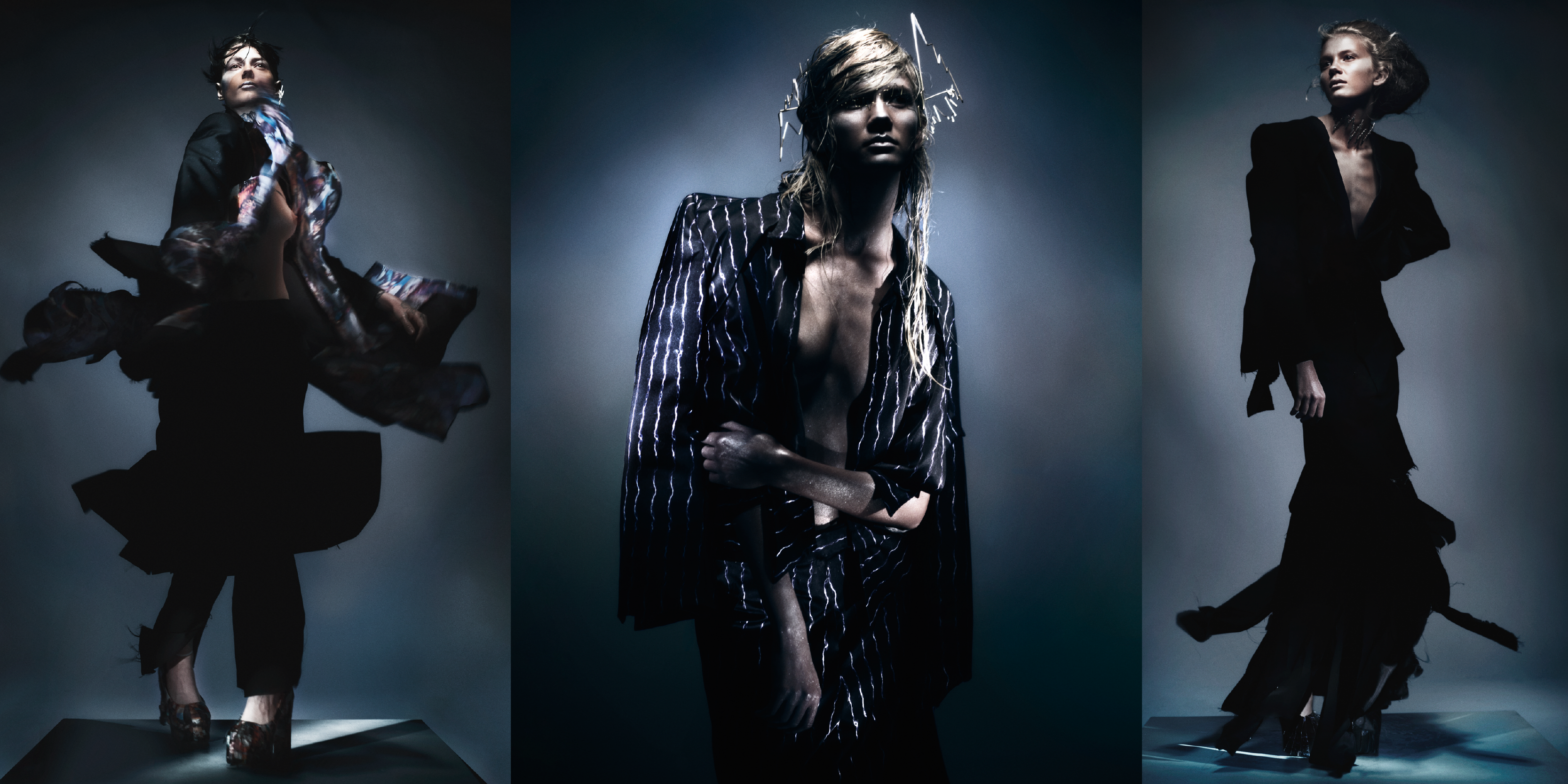Sarabande’s Yoav Hadari’s Designs Combine the Worlds of Fashion and Neuroscience.
Mission’s Sarabande series continues with a spotlight on fashion designer Yoav Hadari. Hadari was born in Palestine and went to school in Israel before attending the lauded art school Central Saint Martins in London. They recently launched their own label and released their first SS23 collection, Cerebral Body, inspired by their fascination with the brain.
Hadari’s design experience blossomed during their work with major fashion houses like Alexander McQueen and Thom Browne. Now, with the support of Sarabande, a charity founded by the late McQueen, Hadari has found their own distinctive voice. “I love being at Sarabande because it feels like you have a partner,” they explain. “Working for a major fashion house, although it can be a space to grow and learn in, it’s not about you or your voice; it’s about someone else’s vision and product.”
The concept for Cerebral Body was an exploration of Hadari’s experience and identity. The collection focuses on their relationship with neuroscience, as they are neurodivergent and lost their father to struggles with Lewy body dementia, a disease that causes protein deposits on the brain, leading to troubles with thinking, moving, and mood. Hadari describes their relationship with the brain as love/hate.”For me, with my family history of neuro-degenerative conditions, studying the brain started from a place of fascination about why those things happen at all (and maybe some anxiety that my future would be the same). After reading about the decay of the brain, I wanted to look into its extraordinary aspects and abilities. There is a lot to work with as a creative, and I’m only getting started,” they say.
It’s hard to imagine something as internal and complex as the brain being translated into something material and wearable, but Hadari’s collection somehow manages. Their pieces include imagery inspired by EEG brain scans, MRI, and AI-generated visuals, depicted through colors and patterns.. It is also worth noting that Hadari achieves this using sustainable materials. “I love examining the corporeal through the ethereal, using lightweight materials like tulle, organza, and shirting, all recycled, donated, or dead stock,” Hadari says.
There are small details weaved through every piece of their collection, symbolizing the intricacies of the brain. For example, on Hadari’s “neurogenesis jacket,” what appears to be a bright floral pattern is actually the shape of brain slices taken from an MRI.
While the representation of neurodivergence in fashion remains small, Hadari doesn’t quite try to be a voice for the underrepresented but rather to express something intrinsic to them. “All of this is quite fresh, and what drives my work is speaking my truth and following what gives me joy…when I design, rather than try to represent anyone, I hope that by being openly neurodivergent and using neuroscience in my work, people who know less about it, or others who identify as neurodivergent, will feel more comfortable to talk about it and be open,” they explain.
For Hadari, fashion has always been about self-expression and discovery. Hadari identifies as non-binary, and the art form served as a way for them to express this identity, “I wore my mother’s dresses and shoes since before I can remember. When I was three, my grandma came to me and said, ‘Yoav, you know you’re a boy, and boys don’t wear skirts?’ And I said, “I know I’m a boy, but I want to wear skirts.” It’s so simple, but we are still discussing this in 2022.”
When asked what Hadari hopes for the future of their brand, they say, “I hope for my brand to be part of a new fashion industry focused on acceptance, inclusion, and kindness. I hope that I can create something that can help make other people feel able to confront the new and unknown in a way that is not intimidating.”
Yoav Hadari S/S 23 photographed by Thomas Alexander.





